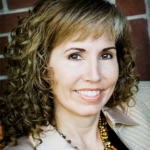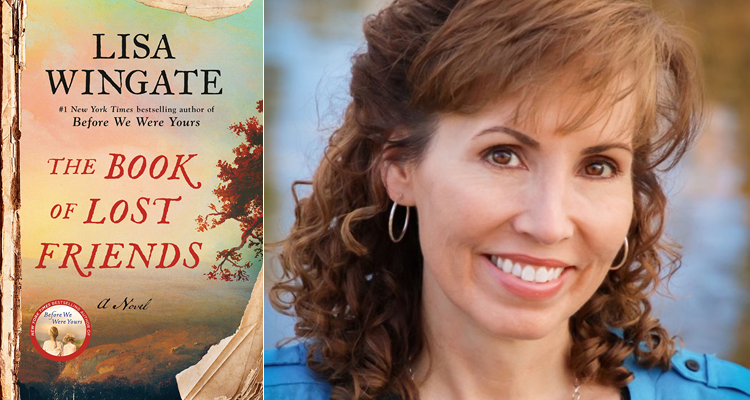Which of the four young ladies did you find the most challenging to write?
 Each was challenging in different ways. Every character’s story is more than just a physical journey. Beyond the adventure, there’s the journey into the human soul, and that is always the harder part to piece together. I meet the characters as you’d meet any new person in real life, with only surface impressions at first.
Each was challenging in different ways. Every character’s story is more than just a physical journey. Beyond the adventure, there’s the journey into the human soul, and that is always the harder part to piece together. I meet the characters as you’d meet any new person in real life, with only surface impressions at first.
Developing the deeper story becomes a process of coming to know what’s happening on the inside, where they’ve been, what inner journeys they’re traveling as human beings. The four young women in The Book Of Lost Friends come from very divergent life circumstances. Their wounds and goals are different, yet on a human level they share the same deep need for love, acceptance, a sense of purpose and place in the world.
The novel also includes two time periods—the Reconstruction-era South of the 1870s and 1980s Louisiana. (Without spoilers) what made you counterbalance the historical parts with sections set more recently (instead of, perhaps, keeping it all in the 1870s?)
I enjoy crafting stories in dual time frames, melding a modern-day story with a historical one. I like looking at history through the eyes of a modern-day character, exploring the lessons that can be learned from those long-ago people who lived, and loved, and left their stories behind.
To me, it’s important to show how the contemporary character’s discovery of the historical story will change modern life. What lessons will be learned? What habits, self-perceptions, future plans might be changed? What secrets might be revealed?
It adds another layer to the story, and I think most of us wonder about the rumors, tall tales and oft-repeated anecdotes in our families and communities. Stories in dual time frames are all about discovering connections and revealing history’s power to teach.
Where do you find the dividing line between keeping your story true to the historical record and taking license for the sake of the story?
When I write about a fascinating nugget of history, I try stay true to the history for the most part. I seek out those voices of lived experience through documents written in the time period. I want to hear the cadence of the language, to know what things people thought about and talked about, to understand how they spent their days, how they accomplished even ordinary mundane tasks.
What were their passions? What were their worries? What was happening in the world around them? The characters are my own, but they are also composites of ordinary people from times past.
In The Book Of Lost Friends, I reimagined history a bit to suit the girls’ ages, setting the story in 1875, ten years after the ending of the war. While separated families had been placing ads in various newspapers since the war’s close, distribution of the “Lost Friends” column actually sprang to life in 1877 and continued through the early part of the twentieth century.
What are you hoping your readers take away from The Book of Lost Friends?
There’s no way to completely understand all the places a story comes from in a writer’s mind, or the combination of experiences, emotions, and perspectives that create it. Similarly, it’s impossible to predict what each reader will take away from the story.
No two people read the same book. We each see the world, on the page and beyond it, through our own personal lens. Each lens is unique, and that’s as it should be.
More than anything, I hope readers take away a deep understanding of the history as it was, of the human costs, of the pain and hopes of the freedmen and freedwomen who placed the Lost Friends ads. Their strength, their determination, their love of family are a reminder that, underlying our differences, are basic needs that draw us together as human beings.
What are the best things you ever heard back from readers?
The most gratifying letters from readers of The Book of Lost friends have been those from readers who discovered the Lost Friends ads through the book, then visited the Lost Friends database online and then found ads written by their own ancestors.
Beyond that, I treasure the connections that a story can create between people and the change that can come from something so simple as a book. Story is our one chance to live within the mind, and heart, and body, and soul of another person.
It has not only the power to entertain, but to uplift, to comfort, to buoy, to enlighten, to ease loneliness, to build empathy, to deepen old friendships, and to create new ones. There is nothing like knowing that, in book form, you’ve walked through the dark night of the soul with someone you never would have known otherwise.
After thirty-two books and twenty years, I’m still in awe of the world-changing potential of books.
Why is storytelling such a powerful way to communicate truth?
I’ve always been fascinated by the power of history, the lives of people long gone, and the lessons they offer. Storytelling takes what is foreign and far away and makes it relevant through the experience of fictional characters. Through story, readers live those experiences with the characters. There’s great value in that.
Reading not only grows our understanding of the world, it fosters and strengthens our connection to the rest of humanity. As a writer, that’s the journey I travel with each story and it’s the experience I hope to pass along to readers, as well. For me, a good story, whether you read it or write it, becomes a life experience.
Click to continue!


